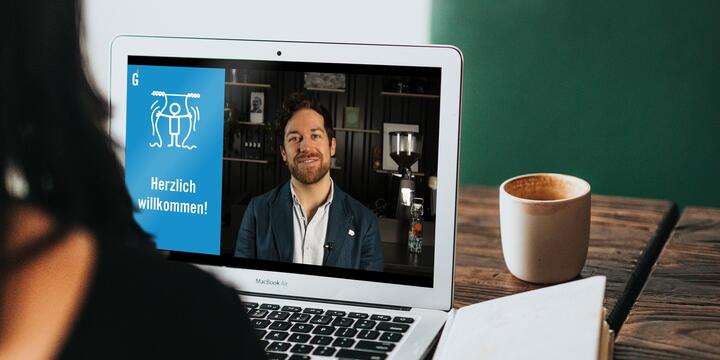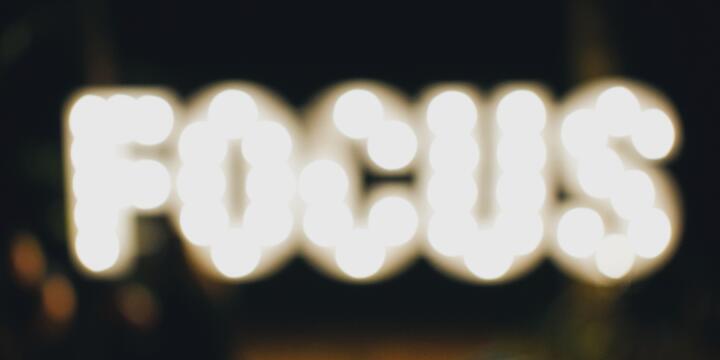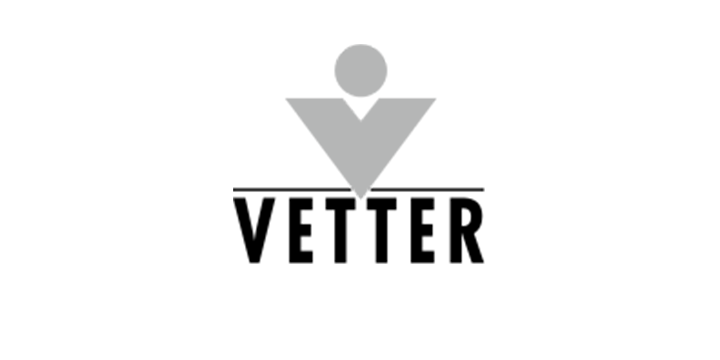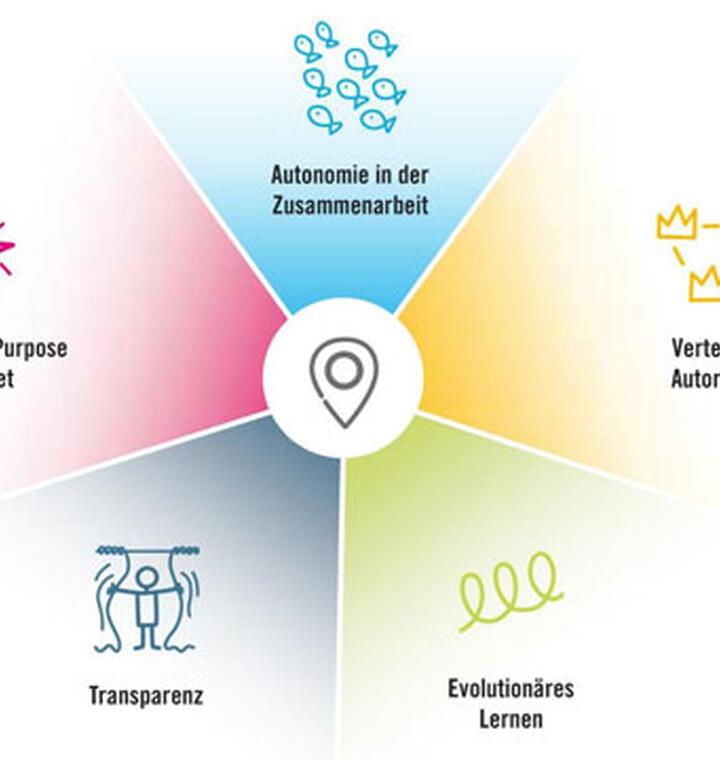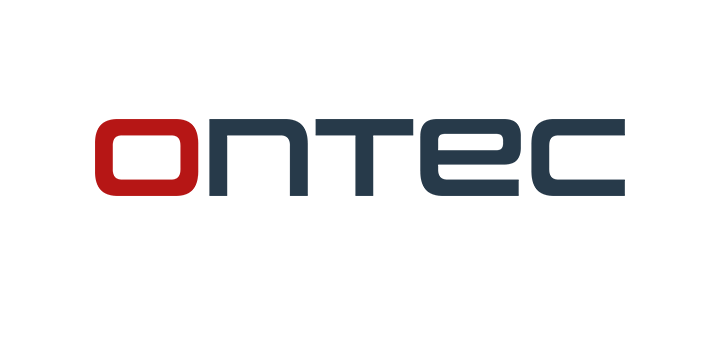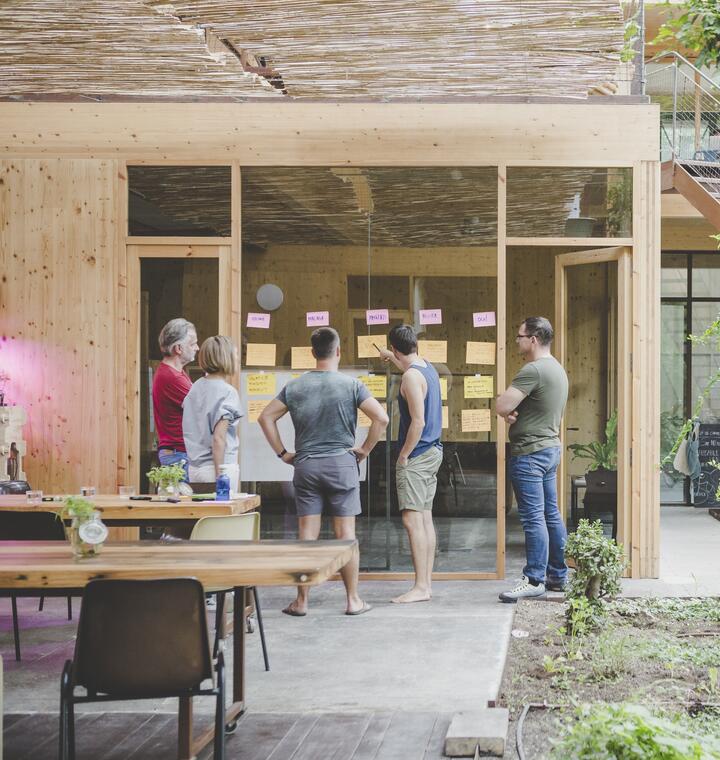Applying The Ready’s OS Canvas to dG
The OS Canvas builds on the idea to create a equally meaningful and accessible tool for organization design as Alex Osterwalder and his colleagues did with the Business Model Canvas for the way we think about Business Models: a tool that offers a practical playground for imagining and implementing a new way of working
To derive the fields for the Canvas, TheReady examined and compared org theories as well as companies pioneering in new ways of working. All research was dedicated to answering the question what features they choose to highlight and hold up as fundamental to (their) organization design. At this point they identified nine areas to represent the most important aspects:
To explore the fields in more detail we suggest you to read this illustrative Medium post by Aaron Dignan of The Ready. Fully accepting that organizations are more akin to organisms or ecosystems, non-linear, interconnected and ever-changing, we believe that organizational reality emerges from dialogue.
It is impossible to reduce a complex system like an organization to a simple framework.
Aaron Dignan
However, frameworks that help to provoke such conversations about how things are and how they should be are highely practical and useful. In order to test the effect of the OS Canvas we used the suggested 90min session design to give it a try.
Since dwarfs and Giants (founded in 2015 with 4 partners, by 2016 evolved to 11 partners) organizes itself using Holacracy (explore our structure here on Glassfrog), we were curious how that would impact the output of our OS Canvas session.
What we have learned…
- Overall the OS Canvas provided a very helpful structure for a deep conversation about how things are at dwarfs and Giants and what to work on.
- The nine areas are easily accessible and make immediate sense. (This impression might be a bit biased though, since we have been dedicating our own work all around org design in the past years. First experiments with clients and especially startups show that a little more explanation and framing is needed in the beginning.)
- The aspiration to keep the titles of each one value agnostic, supports to use the OS Canvas as diagnostic framework, no matter how traditional or forward-thinking your current setup may be.
- The proposal to ground the reflection in real tensions that you sense in your current reality provides a smooth and helpful entry point for reflection.
- The focus on things that bother turned for some of us into an energy drain. Focussing on what doesn’t work solely, felt too deficit-oriented for some colleagues.
A few reflections on the results of our session
We found it especially intriguing that almost none of us had raised tensions in the areas of „Structure & Space“, „Authority & Decisions“, „Policy & Governance“, „Purpose & Values“. Reflecting on that pattern we concluded that Holacracy as plain operating system does a great job in providing a high degree of clarity in these areas of the OS Canvas.
Interestingly many tensions surfaced in the area of „Meetings, Rhythm & Coordination“. At the first glance surprisingly since meeting practices and rhythms are central to Holacracy as well. Digging deeper we found that the major tension in that field was triggered by the way we work: our fragmented business reality, being spread across various client sites during the week, lets us struggle with finding enough time to establish a solid heartbeat for our synchronisation, governance, learning and exchange formats. Even if we dedicated a considerable amount of time for learning and exchange and spent quite some thoughtwork into developing formats that address these tensions over the course of the last year – specifying formats to address role-ationships as well as relationships in a profound way – this area still remains challenging for us.
The other areas such as „Strategy & Innovation“, „Information & Communication“, „People, Development & Motivation“ and „Resource Allocation, Targets & Forecasts“ are typically areas that need to be tackled with tailor-made „Apps“ in Holacracy. Things that will develop over the course of time as reality guides our way. Some of the results were obviously based on the fact, that our company is only in it’s second year (such as very few processes around resource allocation, forecasting etc.). We intentionally defer the development of these systems to the „last responsible moment“ – which is when reality clearly indicates to the need of some governance around that.
Apart from results we reflected on the session and harvested one idea to tweak the session design:
Rather than asking for things that you lack as an organization we would ask for both sides of the coin using sticky-notes with different colours:
- What works really well? What is supporting in doing your best work? And
- What prevents your from doing your best work? What is slowing you down?
We ground this suggestion in our individual resonances during the session and manifold experiences, that resource-oriented perspectives are very often a boost for mobilizing transformation energy. Too many organizations have established cultural patterns not to look for what works well but to focus on pointing out what doesn’t work. Fostering only one side of the fundamental polarity changing vs. sustaining increases the likeliness for resistance to occur.
This article was originally published by Gerald Mitterer on Medium on November 7, 2016





